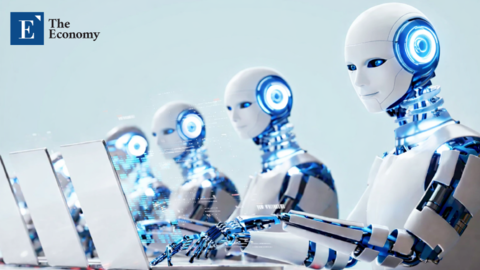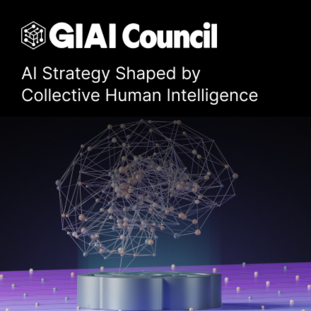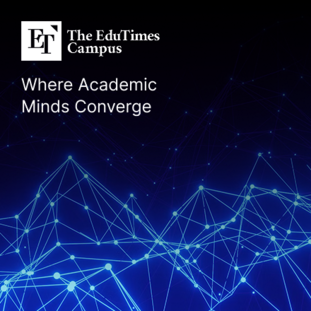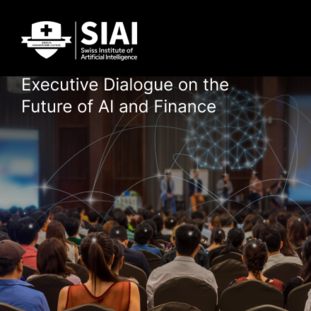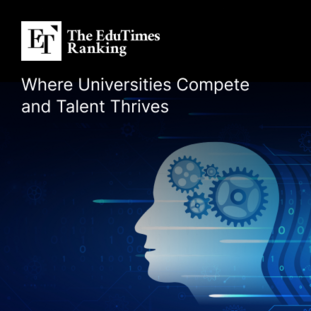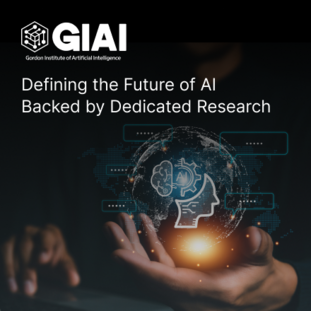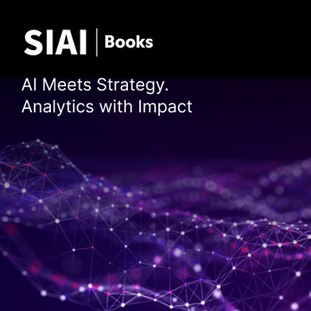America’s Real Education Emergency: Why STEM, Not Student Loans, Deserves Center Stage
Input
Modified
America’s STEM education system is in crisis China is rapidly advancing in STEM through strategic investment and curriculum reform A national STEM strategy centered on data literacy, curricular modernization, and talent retention is urgently needed
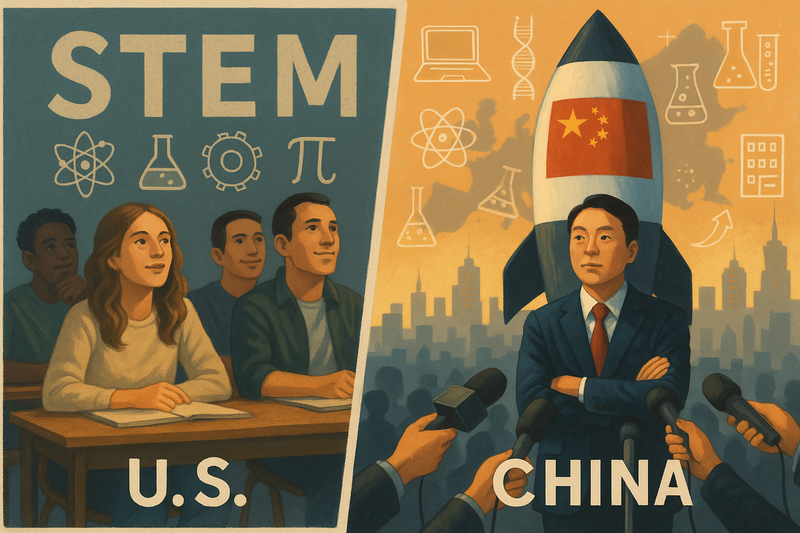
For much of the past decade, America’s educational conversation has been dominated by student debt. Rightly so. The burden of student loans has altered career paths, delayed home ownership, and burdened a generation. But while we fixate on student loan forgiveness, we are ignoring a far more urgent, far-reaching threat—America’s collapse in Science, Technology, Engineering, and Mathematics (STEM) education.
STEM is not just about jobs in Silicon Valley or Wall Street. It is the foundation of national innovation, economic productivity, defense capacity, and our ability to navigate the technologies reshaping the global order. It is, in many ways, the oxygen of modern civilization. And yet, by most metrics, the United States is suffocating. This is no exaggeration. Test scores are plummeting. Workforce shortages loom. International rivals, particularly China, are advancing with surgical precision. We are not just losing a global education race—we are risking our future.
Declining STEM Performance and the Global Talent Gap
In 2022, the National Assessment of Educational Progress—the “Nation’s Report Card”—delivered a grim milestone: for the first time in history, average math scores for nine-year-olds fell. The trend has only worsened. In 2023, American teens recorded their lowest math scores since the 1970s. This isn’t just a post-pandemic blip; it’s the outcome of years of neglect, stagnant reform, and lack of national vision.
America’s students routinely underperform on international benchmarks. In OECD comparisons, we trail behind countries not just like China, but also Estonia, Poland, and Singapore in mathematical reasoning and scientific literacy. These are not abstract rankings—they represent the growing gap in skills needed to participate in and lead the global economy.
Nowhere is this more painfully visible than in the semiconductor industry, a linchpin of the digital age. According to industry estimates, the United States will face a shortfall of 300,000 engineers by 2030. If that happens, 80% of jobs in the semiconductor space could go unfilled. This would sabotage efforts to “reshore” chip manufacturing, reduce reliance on Taiwan, and counter China’s growing technological might.
The 2022 CHIPS and Science Act authorized over $52 billion in funding to jumpstart U.S. semiconductor manufacturing and R&D. But money alone cannot solve a talent shortage. Taiwanese chipmaker TSMC’s Arizona facility has already run into delays—not due to equipment, but because there simply aren’t enough skilled workers to operate it.
The talent shortage doesn’t stop with chips. The fields underpinning artificial intelligence, cybersecurity, clean energy, quantum computing, and biomedical innovation are all struggling to find the people they need. Employers are desperate. But the talent isn’t there.
This shortfall is also a result of a failure to retain foreign talent trained in the United States. Despite graduating thousands of foreign-born students in STEM fields annually, America’s immigration system sends many of them home. Nearly 45% of STEM doctorates in U.S. universities are held by international students. They are trained here, want to stay, and are highly employable. Yet immigration backlogs, low H-1B visa approval rates (as low as 11%), and political gridlock block their path.
Meanwhile, countries like Canada, Germany, and Australia have streamlined their visa processes to welcome the very talent we reject. China, too, sends students abroad to absorb world-class knowledge, then uses it to fuel domestic innovation.
This is self-defeat on a grand scale. We are educating the world’s brightest minds, then letting other nations reap the benefits. In a geopolitical context increasingly defined by technological supremacy, this is not merely inefficient—it’s strategic malpractice.
China’s STEM Surge and the Lessons of Sputnik
While the United States dithers, China is racing ahead. Under President Xi Jinping, China has elevated STEM to the heart of its national strategy. Through the “Made in China 2025” initiative and its broader modernization drive, China is flooding its system with investment, overhauling curricula, and aggressively aligning education with industrial goals.
Today, China produces twice as many STEM PhDs as the United States. It has built research universities focused on frontier technologies, launched pilot AI academies, and fast-tracked majors in low-altitude economy engineering, data science, and intelligent maritime equipment. The Ministry of Education regularly adjusts majors to meet technological and economic needs. In 2024 alone, 1,673 new undergraduate STEM programs were added, while 1,670 obsolete ones—many in arts and humanities—were cut.
China's approach is not just quantity-focused. It is strategic. It seeks to dominate the key domains of the 21st century: AI, semiconductors, green tech, biotech, and quantum computing. These are not academic preferences; they are the technologies that will define economic power and military superiority.
And while China invests at home, it also sends hundreds of thousands of students abroad each year—many to the United States—to study at top institutions. These students return home, bringing back knowledge, research skills, and global networks that fuel China’s growth.
This dual strategy—indigenize and internationalize—has no counterpart in the U.S. Instead, we operate with no comprehensive STEM strategy, no cohesive curriculum reform, and no unified national purpose.
We’ve been here before. In 1957, when the Soviet Union launched Sputnik, the U.S. panicked. But instead of despairing, it acted. The 1958 National Defense Education Act launched federal investments in math, science, and language training, funded scholarships, created new research institutions, and overhauled curriculum design—placing it in the hands of scientists, not politicians.
Those reforms powered the space race, the birth of Silicon Valley, and an era of U.S. innovation unmatched in history.
Where is the modern equivalent? Despite China’s rise, there has been no decisive Sputnik moment to shock America into action. But that doesn't mean the threat isn't real. China doesn’t need to humiliate the U.S. in dramatic fashion. It only needs to quietly outpace us—and it is already doing so.
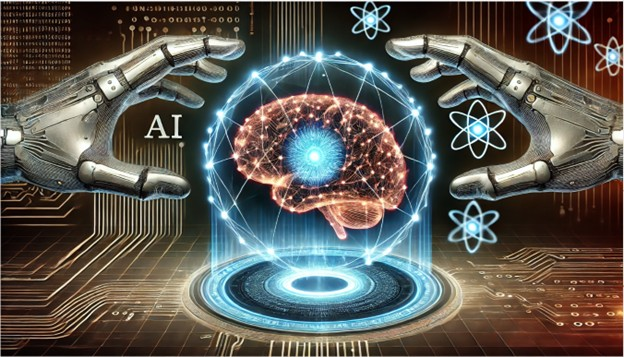
Data Literacy and the Future of National Competitiveness
In this context, the most overlooked and potentially transformative opportunity lies in data literacy. In the digital economy, data is not just the oil—it is the infrastructure, the oxygen, the language of modern life. Whether you're a biologist modeling ecosystems, an economist forecasting markets, or a voter deciphering public health statistics, the ability to read, analyze, and communicate data is fundamental.
Yet most American schools do not teach data literacy in any meaningful way. High school math classes still revolve around outdated sequences of algebra and geometry, while statistical reasoning and computational thinking—skills essential to thriving in the modern world—are treated as electives or afterthoughts.
This must change. Promising legislative efforts like the Data Science and Literacy Act and the Mathematical and Statistical Modeling Education Act aim to modernize K–12 curricula. But they remain underfunded and politically marginalized.
Embedding data literacy across subjects—science, civics, economics, and even the humanities—can equip students not only to succeed professionally, but also to become informed citizens. It can help break down STEM’s intimidating image and expand access to high-demand careers. Importantly, it can also bridge the gap between the technical and humanistic, preparing students to ask not only how systems work, but why they exist and what their impact might be.
There’s also room for optimism. Universities like Fudan in China are offering AI courses to students across all disciplines. The U.S. can do the same—mainstreaming tech fluency and interdisciplinary education to blur traditional academic boundaries. A data-literate society is a resilient society—capable of responding to crises, resisting misinformation, and harnessing innovation for public good.
This does not mean abandoning the humanities. On the contrary, as AI becomes more powerful, ethical reasoning, cultural literacy, and critical thinking become even more essential. But it does mean rebalancing priorities—and recognizing that STEM isn’t a luxury or niche; it’s the core of future-readiness.
America’s STEM crisis is not a future problem—it is a present emergency. Our test scores are in freefall. Our industries are starved for talent. Our immigration policies repel the very people we need. And our main geopolitical rival is executing a coordinated, well-funded strategy to dominate the technologies of tomorrow.
This is not a matter of partisan debate or academic preference. It is a matter of national survival. The 20th century belonged to the countries that led in steel, oil, and nuclear power. The 21st will belong to those who lead in chips, code, and quantum computation.
We cannot afford to wait for a dramatic wake-up call. The slow erosion of capability is just as dangerous as a sudden collapse—and harder to reverse. The path forward is clear:
Launch a comprehensive STEM national strategy, with federal funding, private sector partnerships, and curricular reform.
Invest in data literacy as a universal skill, not just a technical specialty.
Streamline immigration for foreign-born STEM graduates and open paths to citizenship for those already trained here.
Empower educators and scientists, not bureaucrats and ideologues, to design and deliver modern curricula.
Rebalance national education priorities to align with strategic needs—not temporary political fashions.
America has the talent, the institutions, and the resources to lead. What we lack is the urgency. And without urgency, we risk irrelevance. If we still aspire to lead the world—not just morally or militarily, but scientifically and economically—then we must make STEM a national mission, not just a classroom option. The future doesn’t wait. Neither should we.

